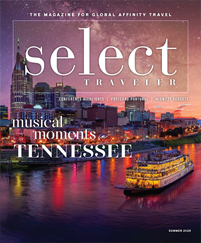The only certainty in the group travel business is that sooner or later, something will go wrong. Your group will miss a flight connection in Chicago, or it will rain on a Yellowstone hike. And people have accidents and break bones, no matter how carefully you have planned every detail of a tour.
When this happens, what saves the day won’t be the perfect itinerary, marketing pitches or any of the hundred other details involved in group travel planning. A smiling face can make all the difference. Your attitude as group leader and the attitudes of those who interact with the group can change the mood of a trip from gloomy to happy, from fearful to hopeful.
Customer service, or “people,” is one of the Seven P’s of Marketing. Already this year, we’ve seen how product, place, price and promotion strategies help craft a working travel program. “People” marketing techniques focus on creating exceptional customer service in face-to-face, phone or online encounters. Especially in travel, where experiences can be bought at the click of a button, having a person that a traveler trusts leading a tour can build a loyalty stronger than any itinerary.
All About Attitude
A blizzard has canceled all your flights for the next three days. You are stuck in Washington, D.C., until then. Do you put on a mournful face and apologize that their trip has been ruined? Or do you twist what happened into a fun adventure?
Successful group leaders try to fix mishaps on the road as best they can. But when chaos is unavoidable, put a humorous spin on it for your customers. If the travelers see the group leader laugh, they feel free to laugh, too. Model the mood you would like the travelers to feel, even if that means you must hide your stress during a travel catastrophe.
Another key to enhanced customer service is knowing the product. Even if you use a tour operator for all your trips, you should research the destination and itinerary enough to answer travelers’ general questions.
Especially when traveling to a foreign country, a preliminary trip there to learn more about the area can help you confidently speak about the destination. When that is not possible, take the time to research thoroughly. You want to seem like the expert, even if you didn’t plan any of the tour. Your members are buying the tour from you, and to keep it that way, you don’t want to appear clueless.
Training Wheels
Thinking about customer service in vague terms isn’t as effective as writing out a customer service program. This document formalizes the level of customer service you aim to provide. It outlines how you plan to implement service at each point in a member’s experience.
For example, have a plan for answering questions before a tour that ensures that every member feels comfortable about the trip. Or make some bullet points for how to handle a traveler who becomes ill during a tour.
This outlines not only how you plan to interact with members but also how other staff will work with your members. Many group travel loyalty programs have other staff who help with the program. Some work behind the scenes, and others go on trips when the program director can’t.
Don’t assume that a staff member’s presence on a tour will enhance the experience. Instead, formalize a training program for staff that will go on tours or interact with your members in any other capacity. Prepare them with protocols to follow when something goes awry. The staff should also research the destination, know the itinerary by heart and be prepared to answer questions about future tours, just as you would.
Keep customer service in mind when you hire a tour operator. The tour operator may plan an enticing itinerary, but if they don’t also value customer service for your members during the tour, you should find another company that places a higher value on keeping your members happy.
Relationship Building Blocks
It is much more expensive to find a new customer than to retain an existing one. Focus a significant amount of your attention on building strong relationships with your current customers.
Get to know customers personally as much as you can. Host social events where members can meet and mingle with you and each other. These events can prove both beneficial to the travel program and enjoyable as you learn about the people you send on travel adventures.
Surveys and feedback are vital for many reasons, but a major reason relates to customer service. You can’t make people feel cared for if you don’t know their expectations. Asking for feedback face-to-face, on your website and at the ends of tours signals to members that you care about what they have to say.
When a customer is complaining about something, no matter how minor, first, listen carefully to the customer’s objections. Then, confirm the validity of each concern. After that, offer the best solution you can.
Some group leaders offer loyal customers extra perks. These members might receive first dibs on future tours, attend special events or vote for future tour destinations.
No matter how your customer service plan ends up looking, remember that the connections you make with your travelers goes beyond the bottom line. Many travel planners say their friendships with their customers is their favorite part of the job. In a career that can involve incredible travel moments, that sentiment is especially meaningful.









